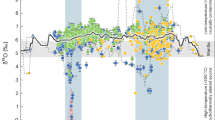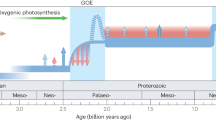Abstract
IT is well known that many plant and animal taxa have what has been termed an ‘Antarctic’ or ‘Antarctogaean’ distribution, that is, they are mainly or entirely restricted to southern Australia and/or New Zealand, southern South America, and, in some cases, South Africa. This has been accepted by many biogeographers as evidence of an ancient connexion between these land-masses, probably via the Antarctic continent. In particular, it is seen as strong evidence in favour of Wegener's hypothesis of ‘continental drift’, a theory now attaining some respectability in the eyes of the geophysicists1 who were formerly its principal opponents.
This is a preview of subscription content, access via your institution
Access options
Subscribe to this journal
Receive 51 print issues and online access
$199.00 per year
only $3.90 per issue
Buy this article
- Purchase on Springer Link
- Instant access to full article PDF
Prices may be subject to local taxes which are calculated during checkout
Similar content being viewed by others
References
Runcorn, S. K. (edit. by), Continental Drift (Academic Press, New York, 1962).
Darlington, P. J., Zoogeography: the Geographical Distribution of Animals (Wiley, New York, 1957).
Hennig, W., Beitr. Z. Ent., 10, 221 (1960).
Johannsen, O. A., Gen. Insect., Fasc. 93 (1909).
Edwards, F. W., Proc. Roy. Entomol. Soc. Lond., B, 9, 120 (1940).
Author information
Authors and Affiliations
Rights and permissions
About this article
Cite this article
COLLESS, D. Fossil Diptera and Continental Drift. Nature 204, 402–403 (1964). https://doi.org/10.1038/204402b0
Published:
Issue Date:
DOI: https://doi.org/10.1038/204402b0
Comments
By submitting a comment you agree to abide by our Terms and Community Guidelines. If you find something abusive or that does not comply with our terms or guidelines please flag it as inappropriate.



